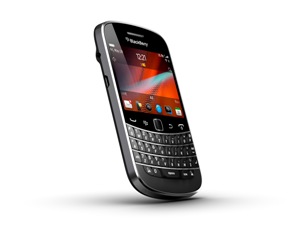Tales In Tech History: BlackBerry

Ultimate survivor. The rise, fall, and rise (?) of former smartphone giant BlackBerry
BlackBerry is perhaps the ultimate survivor in a mobile world that has already seen the likes of Microsoft defeated against the combined might of Android and iOS.
It is worth remembering that for many years mobile users were not just limited to these two platforms.
Indeed, there was plenty of other platforms to choose from including Symbian, Jolla Sailfish, Tizen, Windows Mobile (and then Windows Phone) and of course BlackBerry OS, which was made by a Canadian company called Research in Motion.
But how did BlackBerry survive in a world where the choice of available smartphone platforms has now shrunk down to just two viable options?
The Rise Of RIM
Research in Motion (RIM) was created way back in 1984 by Mike Lazardis (aged just 23) and Douglas Fregin.
This was at a time before mobile phones were a reality for everyday people. Back then people communicated via pagers while out and about, or if you were rich a carphone.
During its early years, the Waterloo, Ontario-based company set itself up doing a number of different projects.
First off there was Budgie, an LED sign business that was contracted by General Motors to communicate to workers on its assembly lines. But that business never really took off and RIM’s owners decided to offload the venture and look at other possibilities.
Another one of these projects was the DigiSync film reader. This was pretty good as it was wanted by Hollywood studios thanks to its synching technology. This allowed movie editors for example to reduce the time it took to turn lots of film content into useable content in post-production. Indeed, the technology was so popular that RIM even won both an Emmy and a technical achievement from the Academy Awards.
Despite that, it was always a sideshow for RIM’s founders. Messaging was RIM’s ambition, and RIM began to work with a number of industry players and one of these was Ericsson. The two firms worked together to develop the technology that would eventually be used in pagers and wireless payment processing systems.
This would become the foundation of the BlackBerry OS going forward.
RIM’s agreement with Ericsson’s Mobitex wireless network allowed RIM to create pagers in North America that operated as a two-way communicators, which was an advanced concept at the time, as cellular networks didn’t do data at that time.
RIM therefore set itself up as the first wireless data technology developer in North America and the first company outside Scandinavia to develop connectivity products for Mobitex wireless packet-switched data communications networks, which became widely used by by military and police forces, firefighters and ambulance services around the world.
Despite some setbacks, RIM remained committed to the technology, and it captured the imagination of a Harvard graduate Jim Balsillie. So much so that Balsillie, aged just 33 years old, decided to invest $250,000 of his own money into RIM by re-mortgaging his house in 1992.
Balsillie would later become co-CEO of RIM alongside Lazaridis.
![]() In 1996, RIM released the Inter@ctive Pager, also known as the RIM 900, its first keyboard-based device. This was the start of BlackBerry’s success, as the company now had three key elements, namely a communications network, a device, and the software that connected the two.
In 1996, RIM released the Inter@ctive Pager, also known as the RIM 900, its first keyboard-based device. This was the start of BlackBerry’s success, as the company now had three key elements, namely a communications network, a device, and the software that connected the two.
RIM went public on the Toronto Stock Exchange in 1997 and in 1998 it released the RIM 950, a dramatically slimmed down two-way pager. Then in 1999 it received FCC approval in the United State to begin selling its first BlackBerry device, the 850, with mobile email.
BlackBerry initially gained market share in the mobile industry by concentrating on email. It also began to offer email services on non-BlackBerry devices, such as the Palm Treo, via its proprietary BlackBerry Connect software.
The terror attacks of 9/11 and the 2001 anthrax scare really made a case for BlackBerry as a secure communications device. The American government for example became RIM’s biggest customer with over half a million of the devices.
The BlackBerry 5810 released in 2002 added voice calling capabilities to the device, and new devices came with a colour screen, as the number of users skyrocketed. By 2005 RIM had four million subscribers, and Balsillie and Lazaridis are named among Time magazine’s 100 most influential people.
Then in 2006 RIM began to look beyond the enterprise market and released the first in a line of consumer-friendly Pearl devices, adding a digital camera and multimedia capabilities.
That strategy paid off and by 2007 RIM had 10 million subscribers and it released the first of its Curve BlackBerry handsets.
The Fall
But like Nokia, RIM was caught by napping by the arrival of the Apple iPhone in 2007. Over the next four years its battle with Apple (and Android) intensified, despite BlackBerry’s endorsement from President Barack Obama.

The Queen even visited BlackBerry’s headquarters in 2010. The Queen was said to be a long-standing fan of the BlackBerry ever since the Duke of York (Prince Andrew) first introduced her to the handsets back in 2007.
![]() When Apple released the iPad in 2010, RIM reacted quickly, but released the unpolished PlayBook in 2011.
When Apple released the iPad in 2010, RIM reacted quickly, but released the unpolished PlayBook in 2011.
Initial reviews of the Playbook were not positive, not helped by the fact that the PlayBook unbelievably lacked the connectivity to popular BlackBerry functions such as email and instant messenger.
![]() RIM began to realise it was in trouble as it struggled with an ageing handset portfolio to maintain a grip on its core enterprise market in the face of a growing challenge from Android and Apple.
RIM began to realise it was in trouble as it struggled with an ageing handset portfolio to maintain a grip on its core enterprise market in the face of a growing challenge from Android and Apple.
Several months later RIM revealed it would cut 2,000 jobs, and matters were not helped in October 2011, when users around the world suffered a four-day service outage.
Both Lazaridis and Balsillie, two of the company’s biggest shareholders, reduced their salaries to $1.
But the pressure was starting to tell. In 2011 co-CEO Mike Lazaridis walked out of an interview with the BBC’s technology correspondent Rory Cellan-Jones after he deemed some of his questions unfair.
![]() And 2012 also proved to be a year of big changes for Research in Motion.
And 2012 also proved to be a year of big changes for Research in Motion.
Both Lazaridis and Balsillie stepped down as co-CEOs and were replaced by Thorsten Heins, RIM’s former chief operating officer.
Within months Heins announced 5,000 layoffs and a delay to the critical BlackBerry 10 software update, which is seen as the company’s last chance to stay alive.
BlackBerry hit its peak in 2013 with 85 million BlackBerry subscribers worldwide, but finances at the company were increasingly dire despite the release of Blackberry 10, and there was talk of the company being sold to its largest shareholder, or even being broken up and its valuable patents sold off to the highest bidder.
This was the same year when the name Research in Motion was dropped, and the firm thereafter became known simply as BlackBerry.
It was also the year when Thorsten Heins’ short lived reign at BlackBerry ended, and former Sybase CEO John Chen was brought in to steady the ship.
Chen from the outset didn’t feel that BlackBerry could continue making handsets, but he refused proposals from several technology companies for various BlackBerry assets on grounds that a break-up did not serve the interest of all stakeholders.
In 2014 BlackBerry released a number of noteworthy handsets including the Passport, and the BlackBerry Classic. Other handsets continued to follow, and Blackberry continued to sell smartphones, but in 2015 with the release of the BlackBerry Priv slider and then the BlackBerry DTEK50, it decided all future handsets would all be Android-based.
And then in September 2016 Chen finally got his way, and Blackberry announced it would cease designing its own phones in favour of licensing them to partners.
The Rise
Yet despite all this, there is reason to be optimistic about BlackBerry’s future.
The firm has a veritable treasure trove of patents, and it has an important stake in a rapidly growing market thanks to RIM’s decision in 2010 to buy QNX, which offers in-vehicle infotainment and telematics systems.
But for many the parallels with Nokia are obvious.
Both BlackBerry and Nokia were icons of their respective nations. Both were dominant at the turn of the decade. Both have now exited the smartphone market after failing to keep up with the times.
Yet BlackBerry remains an important tech player, albeit a diminished one. Its financials have improved, and it is once again reporting strong enterprise sales.
Under the leadership of John Chen, BlackBerry has benefited from its retreat as a smartphone-only firm, and instead turned its attention to software, security and automotive systems for cars.
BlackBerry has the pedigree and the technology to still go a long way.
Think you’re a BlackBerry expert? Take our quiz!